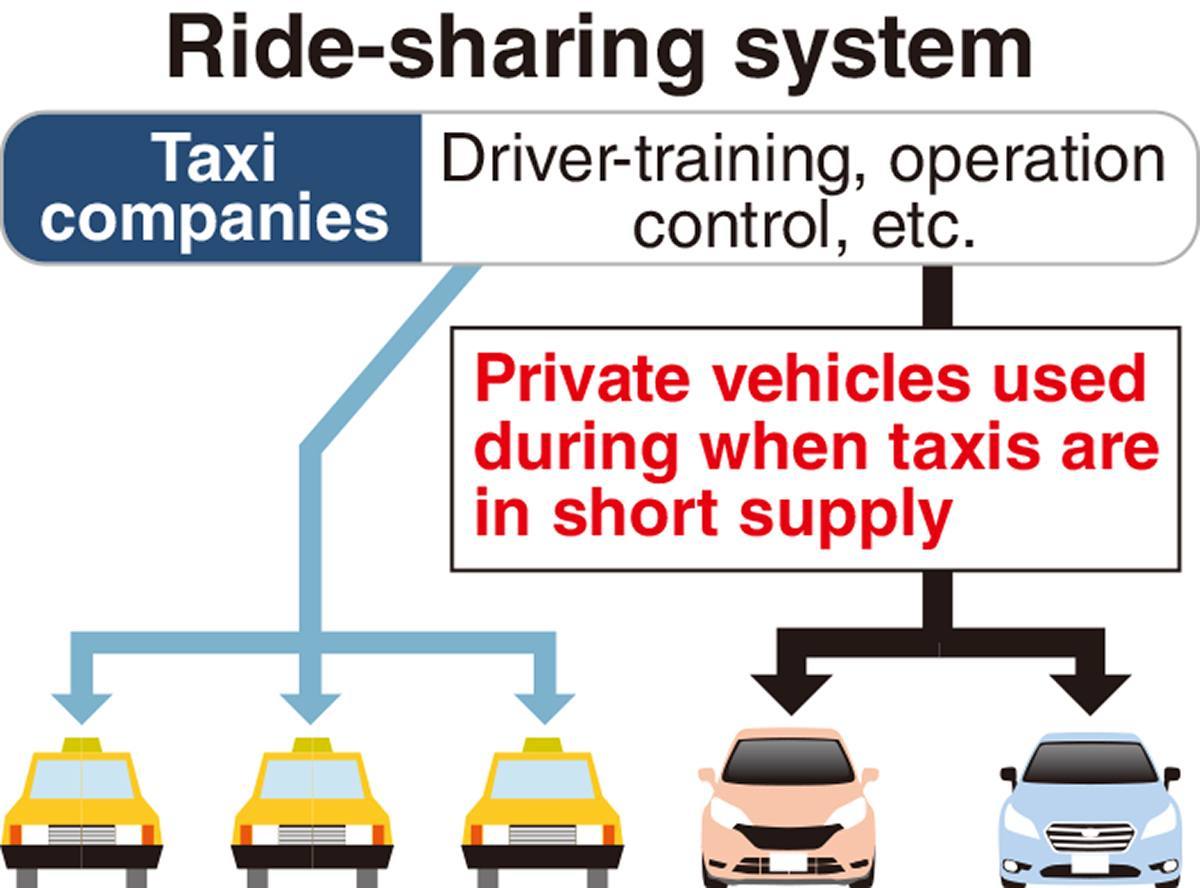
15:50 JST, December 18, 2023
The government has decided to largely lift its ban on ride-sharing services from April.
By the end of the present fiscal year, the government will establish a new system to allow individuals with private cars to transport passengers for a fee under the operational control of a taxi company in places that lack taxi services and during periods where taxi numbers are insufficient.
The government intends to further explain its policy on Wednesday during meeting on digital administrative and fiscal reform, headed by Prime Minister Fumio Kishida.
Taxi companies are finding it difficult to source drivers due to a labor shortage, among other reasons. Under the new system, individuals who hold a standard driver’s license will be able to work for taxi firms.
The system will identify areas with driver shortfalls by drawing upon data from taxi companies’ ride-hailing smartphone applications. The companies will be allowed to cover shortages by using “ordinary” drivers when taxi driver numbers fall short. The ride-sharing practice is expected to be utilized in regional areas and big cities.
In consideration of safety concerns, among other issues, taxi companies are likely to oversee such issues as drivers’ training, operational controls, vehicle maintenance and transportation-related responsibilities.
The relationship between ordinary drivers and taxi companies will not be limited to employment contracts, and the government will seek measures to allow non-taxi drivers to work in various ways. The government also plans to take steps to allow companies other than taxi companies to newly participate in the taxi business.
The government also intends to begin discussions from January regarding the complete lifting of the ban on ride-sharing services, which would allow firms other than taxi operators to offer ride-sharing services, with the aim of producing a final policy around June.
A Class-2 standard motor vehicle license is necessary to become a taxi driver. Transporting fee-paying passengers without a license is known in Japanese as “shirotaku” (unlicensed taxi service) and is prohibited, in principle, by the Road Transportation Law.
However, Japan’s taxi drivers are rapidly decreasing in number. According to government data, there were about 290,000 such workers in 2019. As of March, however, this figure had fallen to about 230,000.
The decline is partly due to a large number of taxi drivers retiring during the COVID-19 pandemic when there was a drop in demand for taxi services.
The decrease in driver numbers has exacerbated the taxi-driver shortfall, and requests for the ban on ride-sharing services to be lifted have come from various entities, including local municipalities with well-known tourist spots.
"Society" POPULAR ARTICLE
-

M4.9 Earthquake Hits Tokyo, Neighboring Prefectures
-

Israeli Tourists Refused Accommodation at Hotel in Japan’s Nagano Pref., Prompting Protest by Israeli Embassy and Probe by Prefecture
-

M7.5 Earthquake Hits Northern Japan; Tsunami Waves Observed in Hokkaido, Aomori and Iwate Prefectures
-

Tsukiji Market Urges Tourists to Avoid Visiting in Year-End
-

High School in Kyoto Says Students Shoplifted during Recent School Trip to Bali, Indonesia
JN ACCESS RANKING
-

Tokyo Economic Security Forum to Hold Inaugural Meeting Amid Tense Global Environment
-

Keidanren Chairman Yoshinobu Tsutsui Visits Kashiwazaki-Kariwa Nuclear Power Plant; Inspects New Emergency Safety System
-

Imports of Rare Earths from China Facing Delays, May Be Caused by Deterioration of Japan-China Relations
-

University of Tokyo Professor Discusses Japanese Economic Security in Interview Ahead of Forum
-

Japan Pulls out of Vietnam Nuclear Project, Complicating Hanoi’s Power Plans























